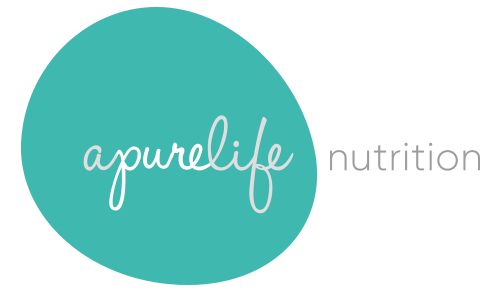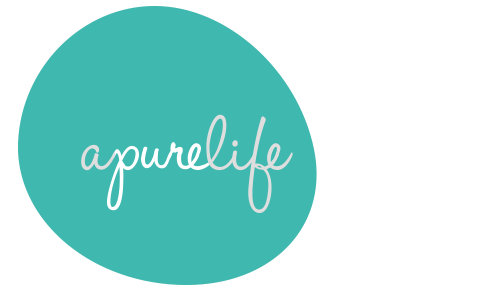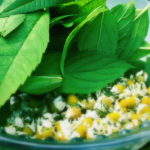Whole Foods for Vibrant Health
Learn To Be A Discerning Shopper By Reading Between The Lines.
Does this sound familiar? You head out to the grocery store to pick up a few items, and an hour later, you are standing in the middle of the aisle utterly confused between twenty different kinds of sliced bread. Should you choose whole wheat or five-grain? All-natural or fresh-baked? You can save precious time and avoid frustration by looking past the packaging with catchy names on food items, and focusing on the ingredient and nutrition facts labels.
Technological advances have allowed us easy access to food, with more choices and greater quantities (at lower cost). At the same time, they have fostered the “refining” of our food supply; literally stripping wholesome foods of their inherent nutritive value, and undermining our health in the process. White flour foods, milled white rice and cereals, as well as chemically processed oils and sugars, crowd the supermarket shelves and skew our perception of what breads and cereals, or even vegetables oils should taste like. As we become better educated on the downfalls of mass production methods employed in livestock industries, as well as the levels of pesticides used in fruit and vegetable farming, many consumers are looking to spend their dollars on healthier alternatives. Now, more than ever, being a savvy food consumer pays off.
Where to Shop…
Over the past several years, the demand for higher quality food has increased rapidly, and the food industry is following in step. While small health food stores and local markets are still some of the best sources of wholesome foods, bigger supermarket chains have jumped on the organic and health food bandwagon. The selection of organic produce, meat, poultry, grain and dairy items has grown tremendously.
What to look for… Whole Foods
Minimally processed foods, such as 100% whole wheat bread, unrefined oil, kasha, brown rice, rolled oats and natural peanut butter are abundant in a variety of vitamins and minerals, as well as disease fighting phytochemical compounds.
First and foremost, don’t be fooled by catchy words on boxes and packages, such as All-Natural and Fresh. Read further to find out what exactly is in the package. You may find that your idea of All-natural is quite different from the manufacturer. Within each of the following categories, you will find the key terms that you need to know to choose your foods wisely. Keep in mind, when buying a packaged product; pick the one with the fewest number of ingredients. If the ingredient list on a box of crackers is the size of a short novel, move on. If you cannot pronounce or comprehend the majority of ingredients without a degree in biochemistry, don’t put it in the shopping cart.
Breads, Cereals and Grains
The biggest misconception about breads and cereals is that whole wheat flour or wheat flour listed as the main ingredient, implies a whole-grain product. This is not true. In fact, wheat flour is just another word for white flour. If the product doesn’t say 100% whole wheat, rye, spelt or whatever grain is used, you are getting a highly processed food. Stone ground whole grains and sprouted grains are also excellent sources of whole-grain nutrition.
Look for breads with at least 2 grams of fiber per slice, and cereals with no less than four grams of fiber per serving. If you have trouble deciphering a whole grain product from the ingredients, check the nutrition facts label. There have been numerous times that I picked up a loaf of so called whole wheat bread, only to find there is a meager one gram of fiber per slice; no different from white bread.
White rice and pasta may be served in most restaurants, but there are a variety of whole grains out there that many of us have never eaten or cooked with before. They are tasty and versatile, and easy to find once you know what you are looking for. Amaranth, millet, quinoa, barley, buckwheat, rye, bulgar, wheatberries, wild and brown rice and whole wheat pastas can be paired with nuts, vegetables, chicken or fish for a delicious meal.
Whole Food Recipe to try at home
Wheat berry Salad with Beets and Pine Nuts
- 2 cups hard wheat berries (hard wheat berries are higher in protein than soft wheat berries)
- 2 tablespoons champagne or sherry vinegar
2 tablespoons lemon juice
sea salt and pepper to taste - 4 tablespoons extra virgin olive oil
- 3 cups cooked beets, medium dice
- 1 small shallot, chopped fine
1/4 cup toasted pine nuts - 1/4 cup chopped dill
- Add wheat berries to 3 quarts of boiling water, and simmer for about 1 hour, uncovered, until they are soft.
- Drain and rinse under cold water.
- Whisk together the vinegar, lemon & olive oil. Add to wheat berries and toss. Add remaining ingredients.
Can be made 2 days ahead. - Yield 8 servings
Fruits and Vegetables
I recommend buying organic produce whenever available, which is grown without using most conventional pesticides; petroleum based fertilizers; bioengineering; or ionizing radiation.
Fruits and vegetables eaten in season and grown locally are the freshest and highest in vital nutrients. Second to fresh produce, choose frozen (foods loose very little of their nutritional value during the freezing process). Canned fruits and vegetables generally don’t taste as good, and they can be high in sugar and sodium.
Meat, Fish, Poultry, Dairy and Eggs
Look for organic, free-range chicken and turkey, and grass-fed beef. Organic meat, poultry, eggs and dairy products such as cheese, milk and yogurt, come from animals raised without antibiotics or growth hormones.
Free-range chicken and turkey are naturally raised, free from the force-fed, caged lives of mass- produced poultry. From a nutritional perspective, this is an advantage, however, there are many levels of animal welfare under the designation “free-range”. Check the package label or ask the butcher at the market to verify the treatment of the animals.
They are often given time to roam on porches or the land, eating pesticide-free seeds and grains. Note that if a roaster chicken is labeled as Natural, that doesn’t mean it is organic or free- range. Typically it means that no antibiotics or hormones have been used in the raising of the animal. In the same vein, a package of chicken breasts labeled Organic, is not- necessarily free-range and vice versa. These chickens’ feed may be organic, but they are still cooped up and not permitted to roam the land and eat freely. Read packages carefully to ensure that you are choosing the product that is right for you.
Grass-fed beef comes from cows that roam the pastures. These meats are free of antibiotics and growth hormones. Grass-fed beef has a lower fat content, and healthier fat profile than corn-fed beef (with a better ratio of unsaturated to saturated fat). Meats from naturally raised animals are healthier for both you and the environment.
Fish is the most easily digested source of animal protein, with arguably the healthiest nutritional profile. Salmon, in particular, is widely consumed for its unique flavor and high quantity of heart healthy omega-3 fatty acids. Over the last forty years, farmed salmon has become a huge industry, now accounting for almost half of the supply. Farmed salmon has aroused much controversy, when scientific studies revealed the high levels of carcinogenic chemicals present in many of the fish. Since then, many reputable companies have emerged that offer sustainable, high quality farmed fish and new rules require that all seafood be labeled with the place of origin, and whether the fish is wild or farmed.
Unfortunately, fish fraud and mislabeling are widespread problems. Environmental advocate oceana.org, conducted DNA testing of more than 1,200 fish samples at retail outlets between 2010 and 2012. Results showed mislabeling was found 26 of the 49 fish types tested (that is 59%). Follow the link oceana.org/fraudnationwide to view the eyeopening report about the fish you think you are eating, and what you may be getting.
To gain the greatest heart health benefits from fish, with the least cancer risk, choose “wild” fresh salmon or canned salmon (also made from wild salmon) whenever available. Alaskan and British Columbian Chum is the least contaminated species of wild salmon, while farmed salmon from Scotland and The Faroe Islands are most contaminated (Source: Nutrition Action Health Letter, June 2004).
Oils
Aside from Extra Virgin Olive oil, most people give little thought to the quality of the oil stored in their pantry. It is uncommon knowledge that most oils without the label “unrefined” have been harshly treated with chemicals, including bleaches and deodorizers. Many large producers use high heat and chemical processing methods to give oils a longer shelf life, making them more profitable. Unfortunately, these refined oils are depleted of vital nutrients such as chlorophyll, vitamin E and trace minerals, naturally present in the plants that they come from. Extra virgin olive oil is the exception, and remains unrefined and un-deodorized, despite not being labeled. Choose bottled oils that are mechanically (expeller) pressed, under low-heat conditions (cold-pressed). These oils retain their antioxidant vitamin E content, helping to preserve the oil from rancidity, naturally.
You don’t need a PhD in food science to shop for a healthy diet. With a little nutrition knowledge and a few basic rules, you can strategically navigate the supermarket aisles – seeking out the cream of the food crop for you and your family.



